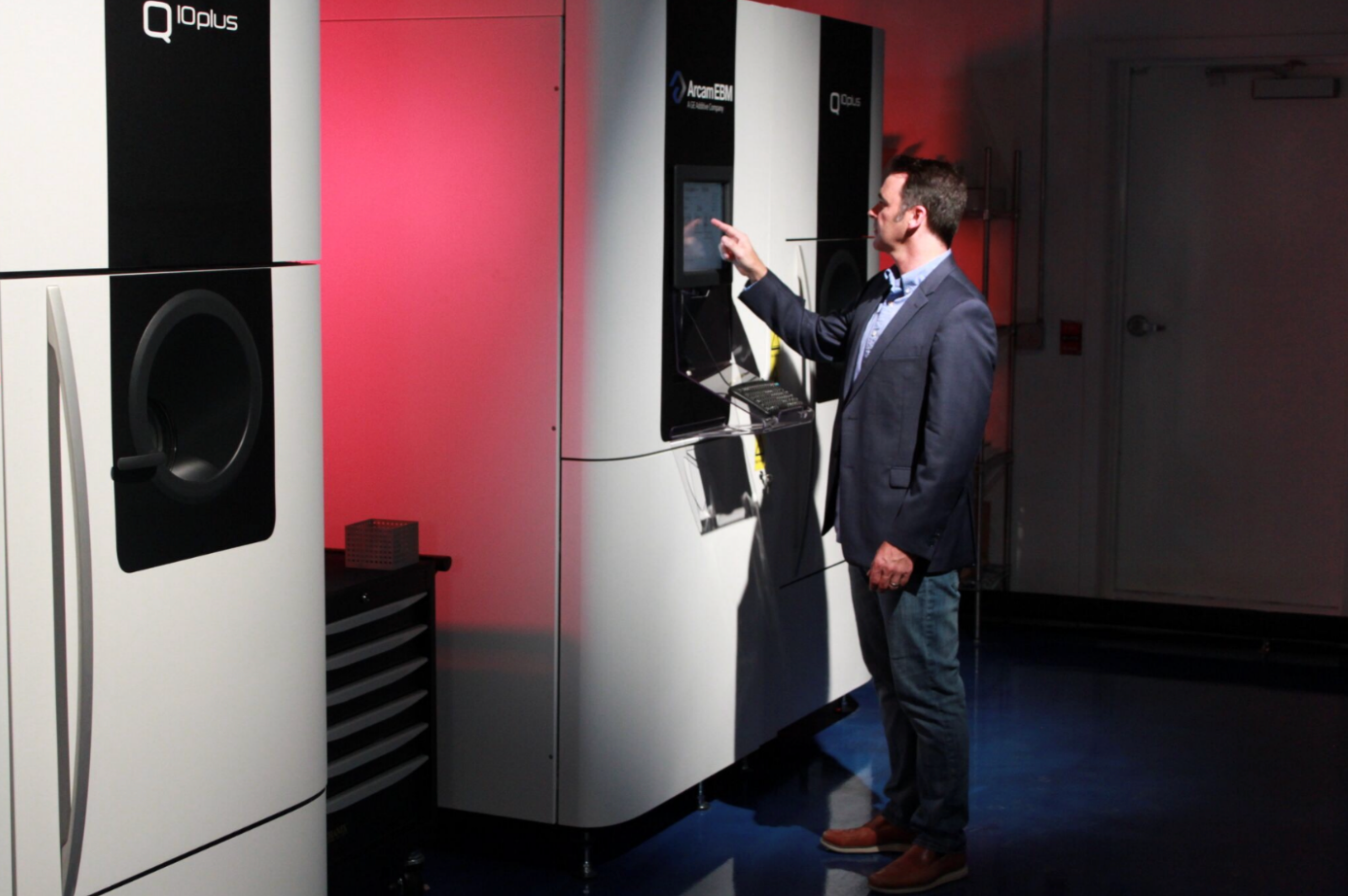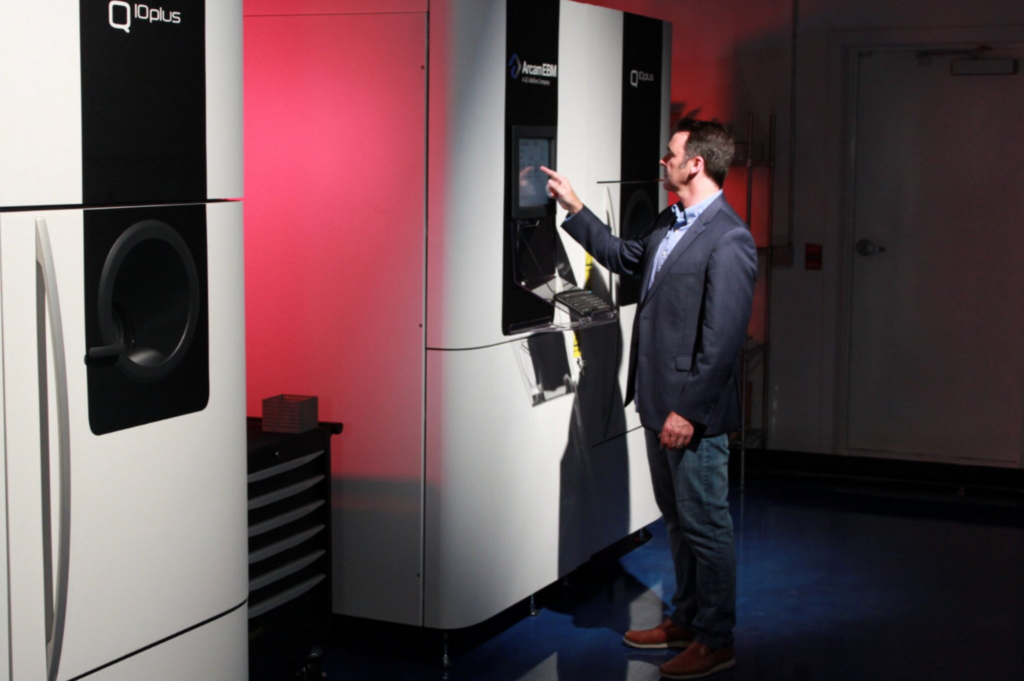
This is the thirteenth in a series of 6-Question interviews with leaders who are challenging conventional thinking in Orthopedics (read other interviews here).
Amplify is a US-based additive manufacturing company specializing in the design, engineering, and manufacturing of 3D metal-printed orthopedic implants. The technology is moving quickly to hips & knees, spine, extremities and oncology.
I have known Brian McLaughlin for over 10 years now. He’s an expert in the additive manufacturing and is passionate about creating better solutions for the Orthopedic market. I sat down and asked Brian a few questions about his new venture at Amplify.
1 – First, tell us about Amplify and how you founded.
Amplify Additive is a company looking to fill the void in the industry for Additive Manufacturing suppliers. I founded Amplify out of a need I experienced when I was part of an early stage Orthopedic OEM leveraging Additive Manufacturing, specifically Electron Beam Melting by Arcam, now part of GE Additive. At the time, there were only (2) EBM suppliers here in the US and there were reasons I chose not to use them at the time. Therefore, I outsourced EBM manufacturing to Germany with a company that only had (1) Q10 machine. The challenge we faced with this supplier wasn’t that they didn’t have experience, they in fact had pretty good experience, but they didn’t have redundancy. Also, it took 3-4 weeks, sometimes longer, to get production and they didn’t have some of the same software tools as we initially wanted to use. Additionally, we dealt with brining implants through US Customs, which occasionally caused problems. From all of these challenges, the idea for Amplify Additive was born. In July 2018, I decided to leave the OEM and started down the path for raising money to bring Amplify to market as a supplier with this unique experience.
We successfully closed our funding round this past July, oversubscribing our round and leveraging some additional funding resources to bring in (3) Arcam Q10plus machines. At the time of funding, the team was a modest (3) people, and shortly after that we became (4) with the addition of our first employee in August. We are in the process of adding a Quality Engineer to the team.
Why Maine? In 2008 when I joined Orchid Design, we had moved from Maine to Connecticut for me to get more engaged in the Orthopedic market given that is my passion. Almost exactly 9 years later in 2017 when working remotely for and OEM, we decided to move back to Maine for lots of reasons, lifestyle being a big part of that. I had always said that if I could go out and get this experience and learn all about the Ortho industry, I’d bring it back to Maine with me and do something here. I like to think that I’ve done that and then some considering Amplify Additive is one of three suppliers of EBM for Ortho here in the US market.
Fund raising for Amplify has been a journey. Interestingly enough, prior to moving to CT in 2008, I had connected with many in the investment community in Maine and upon returning in 2017, I already had many relationships from years prior. Therefore, even though it was 9 years later, many of the same people and organizations were still in place, and many are now investors or lenders to Amplify.
2 – Why Amplify now and what makes Amplify special?
When it comes to a startup, many people say timing is everything. I’ve accomplished numerous things over the years, including a startup Ortho OEM leveraging AM for products focused on Foot & Ankle, and prior to that being on the team that helped introduce the Q10 EBM platform to the market. What separates Amplify Additive from others supply companies in the market is that we’ve been there before, while not many suppliers can really say that. We’ve taken all the past experiences and melded them into what Amplify is, to perhaps having one of the most thought out facilities to house EBM with regards to infrastructure, to designing strategic alliances to help clients get their products to market faster. Because we have experience on all sides of the industry – design & manufacturing with one of the largest Orthopedic suppliers, clinical experience as an Orthopedic implant distributor, unique and specific experience helping commercialize the 3rd generation Arcam platform, and having had an opportunity to provide guidance to the FDA on Additive Manufacturing – we fully understand what it takes to bring an additive product through the FDA and out to the market. This complete experience is what separates us from other suppliers. However, what will really separate us from others is our world class team that will be tough to match. For instance, aside from the core team that I have been educating and training from the time we started to raise our round, our first employee, Jonathan Buckley, was previously with GE Additive and was the person responsible for training other companies on EBM technology. With his unique experience combined with mine, we are a formidable team to say the least.

I believe Amplify Additive is the right company at the right time for the industry. In a previous article for you, I outlined the challenges the supply chain has with Additive – what technology, what supplier, and with what experience… Experience matters when it comes to executing in a timely manner, and we have a team with superior experience to many, if not all, of the other suppliers.
3 – Why EBM over Laser?
There isn’t just one answer to this question. First to understand the question, one needs to understand the technology. There is a significant difference between EBM and Laser. For the record, I believe in both technologies – they both have a place in the market. That said, I am a firm believer in EBM for Orthopedic applications where fusion is a crucial – spine, total joints, revision, oncology, extremities.
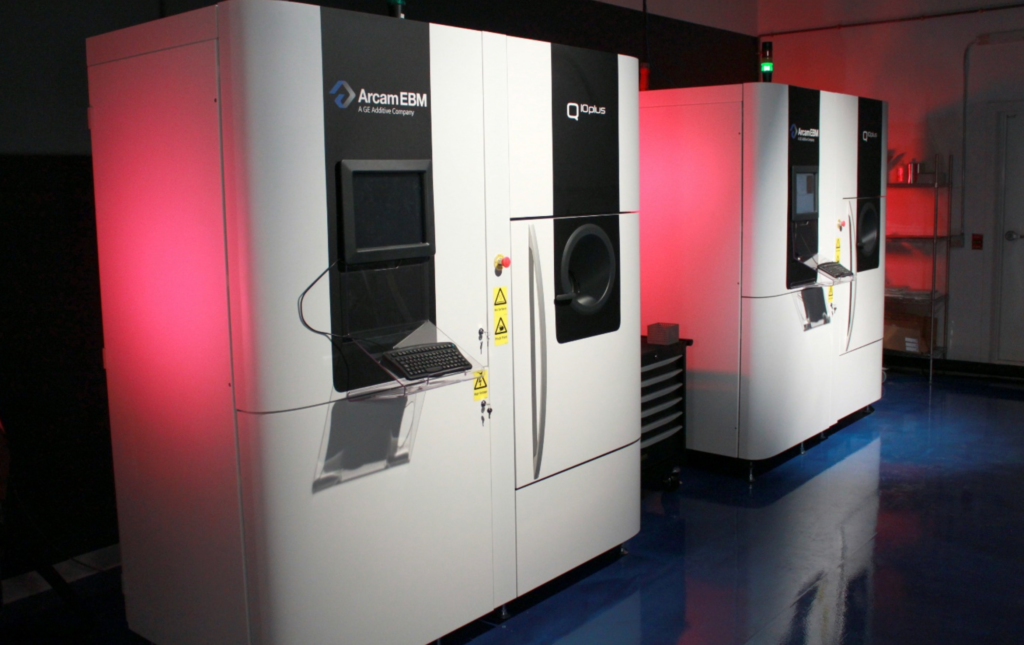
EBM (Electron Beam Melting) is a PBF (Powder Bed Fusion) technology as is DMLS (Direct Metal Laser Sintering). The EBM process is done under vacuum at elevated temperatures, temperatures just under the melting temperature of the material. Because of the elevated temperatures, EBM effecitively eliminates residual stresses in the parts, simplifying post processing without the need for further heat treament. DMLS on the other hand requires heat treatment of parts post printing to remove residual stress.
Another difference is processing speed and power. EBM operates at 3000W as compared to most lasers at 500W, although there may be more powerful lasers now. EBM is an order of magnitue more powerful which also helps with higher temerature materials. Also, EBM is modulated by magnetics, not optics and mechanical components, so once again, this leads to a much faster processing. When wathcing the process, it appears to be multiple beams, and in fact is called multibeam, but in reality is a single beam moving really fast.
Another important difference between the two technologies is that EBM provides the ability to stack parts in the platform. Because EBM does not require parts to be connected to the platform, and subsequently be wire EDM’d off the platform as is the case for laser, EBM provides the ability to vertically stack parts and thus better utilize the volumetric build volume. For parts like acetabular cups, we can nest components above one another with a nominal spacing of 1-2 mm between parts. For parts like spinal cages, we can simply stack parts above each layer, with each additional layer essentially suspended above the previous layer.
One of the biggest arguments over the years between EBM to laser has been resolution. Laser does provide a smoother outside finish, so for certain applications that makes perfect sense. The smoother finish comes from a smaller layer thickness, where Laser layer thicknesses can be in the 20 micron range as compared to EBM at 50 microns. However, in the field of Orthopedics, roughness matters at the bone interface and the EBM process provides a roughness that has shown to be more effective at the microscopic scale for fusion.
4 – Why hasn’t the industry embraced AM sooner?
Great question. Part of the answer is that AM has been evolving over the past 5-10 years so rapidly, that for an industry like orthopedics where we rely on consistent manufacturing processes, AM just wasn’t there. I believe we have attained a level of consistency more recently with various processes and this is less of an issue. That said, because of the evolution of the technology, the question becomes who has what technology platform, whether EBM or Laser, what version of the technology, and what experience do they have on that platform.
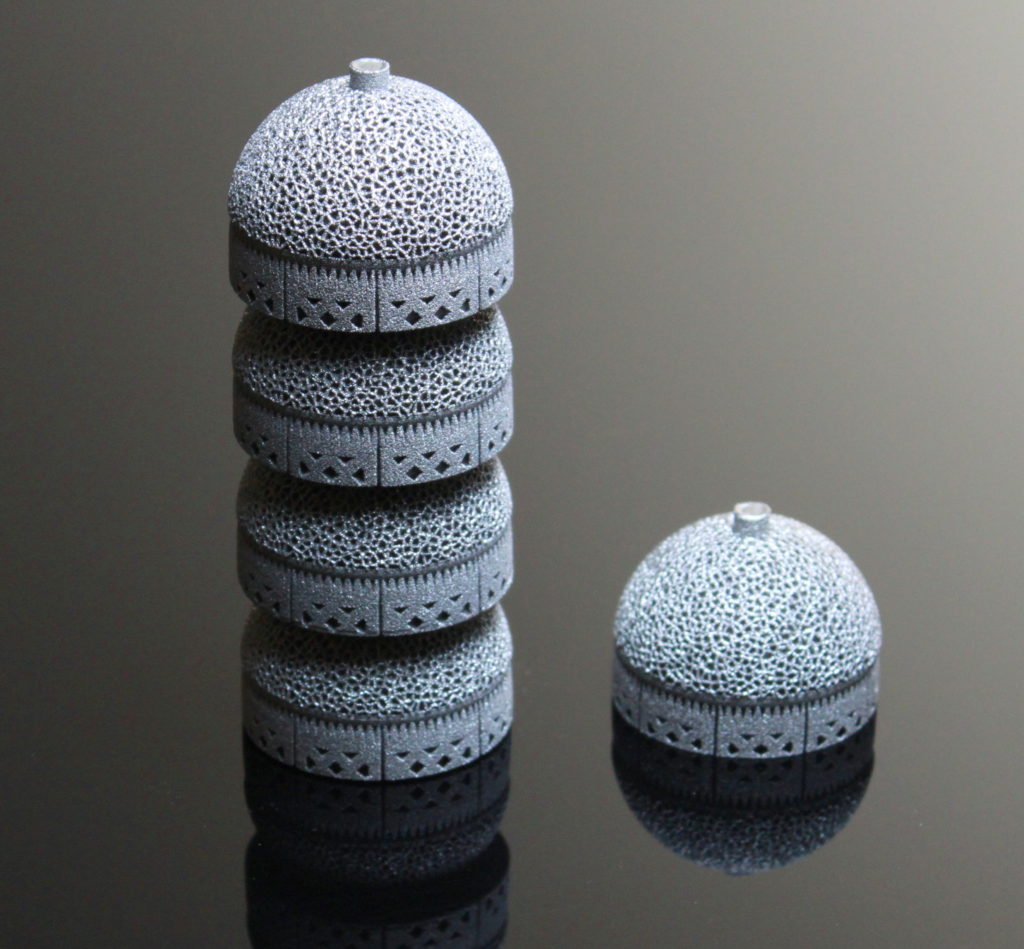
AM is also a threat to many, from existing suppliers to implant companies themselves. Existing suppliers who have built infrastructure around more traditional technologies including things like TPS (Titanium Plasma Spray) see this as a tremendous threat because AM can eliminate certain manufacturing steps. For OEMs, while a transformative technology such as AM can be a game changer, many cannot just change directions that quickly due to regulatory clearances, inventory, and generally just not having access to the technology. So while AM should be a technology that the industry is grabbing hold of as much as possible and investing in it and planning for the future, the growth is a fraction of probably what it should be.
5 – What are some of the other challenges you see facing the industry for AM adoption?
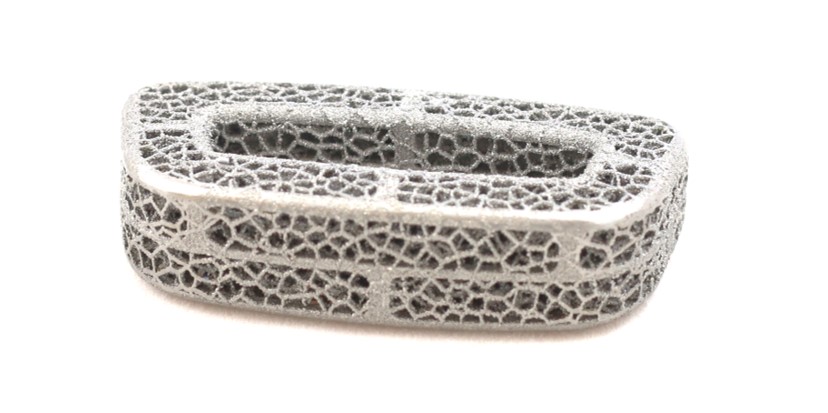
Education is still one of the biggest issues facing the adoption of AM in any and all industries, including the Ortho industry. Understanding the various methods enough to know where and how to leverage each solution is one piece of that, and simply speaking there are not enough experienced Engineers in the world for all companies to leverage for this. So, education is key to the success of AM worldwide.
Also, the software industry is still catching up in many regards, from design tools to process flow to materials tracking.
6 – Where do you see Amplify in 1 year, 3 years and 5 years?
Over the next year, we are focused on rapid expansion and adding the right resources and team members. We know who many of the companies are that have used EBM and what some of their current challenges are, so we can help those companies solve some of their more challenging problems. In the next couple of months, we expect to receive ISO 13485:2016 certification per our strategic plan, which will certainly change who we are in the marketplace as a supplier.
In 3 years, we expect to be the single largest supplier for EBM worldwide.
5 years seems like a long way off, but then again, the past 6 months has flown by. Assuming we make it 5 years, our plan is to continue to invest and to grow. We have the team with the technology and industry experience, and we have built a unique facility with infrastructure for rapid growth. That said, I hope to outgrow our current facility in the next 2 years so we will be able to build a facility tailored to the AM industry that can accommodate many more AM machines.
For more information about Amplify, you can email Brian R. McLaughlin at brian@amplifyadditive.com or visit amplifyadditive.com to learn more.

 Tiger Buford – retained recruiter dissecting orthopedics
Tiger Buford – retained recruiter dissecting orthopedics 